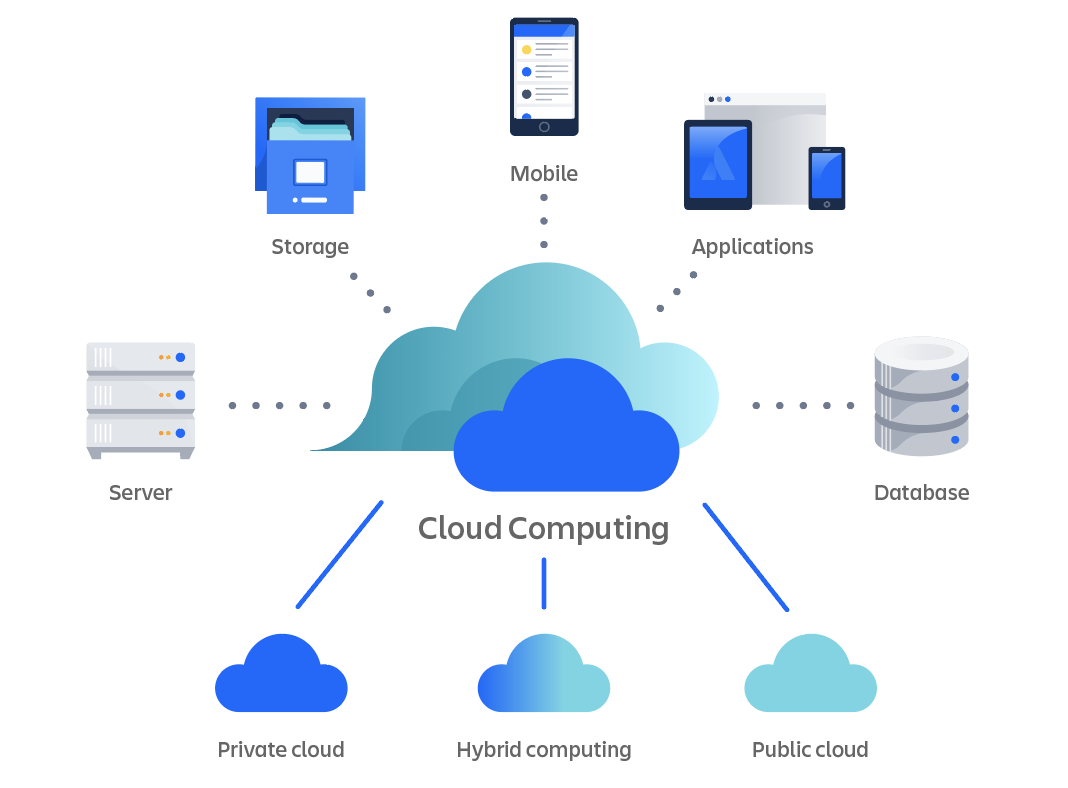LinkDaddy Cloud Services Revealed: Professional Techniques for Cloud Services Press Release Quality
LinkDaddy Cloud Services Revealed: Professional Techniques for Cloud Services Press Release Quality
Blog Article
Simplify Your Framework With Cloud Solutions
As organizations browse the ever-evolving landscape of technology and data management, the duty of cloud services in streamlining framework has actually become increasingly noticeable. The attraction of structured processes, boosted effectiveness, and boosted resource appropriation with cloud options is undeniable. Nonetheless, the trip towards a much more economical and dexterous IT framework involves even more than just moving to the cloud. It calls for a critical strategy and a deep understanding of the subtleties of cloud adoption. So, exactly how can businesses successfully browse this shift and truly unlock the capacity of cloud services for streamlining their infrastructure?
Benefits of Cloud Services
Cloud solutions use a structured method to handling IT infrastructure, offering services with versatility, cost-efficiency, and scalability. One of the key benefits of cloud solutions is the scalability they supply.
In addition, cloud services eliminate the requirement for services to invest in costly hardware and software. This cost-efficiency is a considerable benefit, particularly for little to medium-sized business wanting to decrease upfront costs. By utilizing cloud services, organizations can access high-quality IT sources without the large cost associated with conventional framework setups.
Furthermore, cloud services offer services with the adaptability to access their information and applications from anywhere with an internet connection. This degree of access boosts cooperation among groups, allows remote job, and increases general efficiency. The adaptability supplied by cloud solutions encourages organizations to adjust swiftly to altering market conditions and client demands.
Cost Financial Savings and Scalability
Along with the operational benefits highlighted earlier, the integration of cloud services right into a company's framework generates significant price savings and boosted scalability. Cloud solutions use a pay-as-you-go design, allowing companies to range sources up or down based upon existing demands, therefore staying clear of the expenses linked with preserving excess capacity. This versatility enables companies to adjust quickly to rising and fall demands without sustaining unneeded costs.
Furthermore, cloud solutions remove the demand for upfront investments in hardware and software, decreasing funding expenses. Operating costs are also reduced as business no more need to handle and preserve physical web servers, leading to reduced energy consumption and IT staffing expenses. In addition, cloud services give automated updates and maintenance, ensuring that the facilities remains safe and secure and updated without requiring manual treatments.
Enhanced Security Actions
Executing rigorous protection measures is critical when incorporating cloud solutions into a firm's facilities to secure sensitive information and guarantee conformity with industry regulations. Cloud company use boosted safety and security functions such as information encryption, firewall software protection, and multi-factor verification to minimize cybersecurity risks. Encryption helps shield data both at rest and in transportation, making sure that only authorized individuals can access delicate info. Firewall softwares work as an obstacle in between outside dangers and internal networks, tracking and managing inbound and outbound network website traffic. Multi-factor verification includes an extra layer of security by requiring individuals to offer multiple forms of verification before accessing the cloud services.
Moreover, regular safety audits and compliance analyses help guarantee and identify susceptabilities adherence to sector criteria. Business can also gain from features like computerized protection updates and real-time danger monitoring given by cloud provider. By focusing on safety and security actions and remaining aggressive in attending to potential dangers, organizations can with confidence take advantage of cloud solutions while safeguarding their beneficial data from unapproved access or breaches.
Transitioning to Cloud Framework
To efficiently integrate cloud services into a business's infrastructure, a structured technique that resolves the change in the direction of cloud-based services is essential. Transitioning to cloud facilities includes cautious preparation and implementation to make certain a smooth movement procedure - linkdaddy cloud services press release.
When the assessment is complete, a movement technique must be developed. This technique needs to detail the timeline, sources, and responsibilities for moving each component to the cloud. It is vital to interact this strategy clearly to all stakeholders to make sure positioning and reduce disruptions throughout the shift.
During the migration screening, procedure and tracking are crucial to identify and resolve any type of issues quickly. Regular checkpoints must be established to track progression and make essential modifications. Additionally, training for staff members on utilizing cloud services should be given to make certain an effective shift and optimize the benefits of the brand-new facilities.
Finest Practices for Cloud Adoption
Effective adoption of cloud solutions why not look here depends upon the tactical alignment of organization goals with technical abilities and organizational readiness. To make certain a smooth transition to the cloud, companies ought to begin by conducting a comprehensive analysis of their present infrastructure and recognizing which work are best matched for cloud movement. It is important to entail key stakeholders from various departments in the decision-making process to obtain buy-in and address any type of issues early on.
One more best practice for cloud adoption is to focus on safety and security and conformity. Organizations has to carefully review the security steps used by cloud provider and guarantee that their information is shielded according to sector criteria and regulative demands. Applying durable information encryption, access controls, and routine safety audits can assist reduce threats related to cloud adoption.

Conclusion

As companies browse the ever-evolving landscape of technology and data monitoring, the duty of cloud services in streamlining infrastructure has ended up being significantly famous - Cloud Services. Just how can businesses efficiently navigate this shift and absolutely open the potential of cloud services for streamlining their infrastructure?
Cloud services use a structured technique to handling IT infrastructure, supplying organizations with flexibility, cost-efficiency, and scalability. By utilizing cloud solutions, companies their explanation can access high-grade IT resources without the significant cost tag connected with standard facilities configurations.
To make certain a smooth change to the cloud, companies need to begin by conducting a detailed evaluation of their present infrastructure and identifying which work are best matched for cloud movement.
Report this page